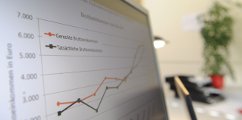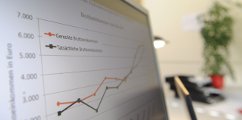Whether fat or thin, male or female, young or old—people are different. Alongside their physical features, they also differ in terms of nationality and ethnicity; in their cultural preferences, lifestyles, attitudes, orientations, and philosophies; in their competencies, qualifications, and traits; and in their professions. But how do such heterogeneities lead to social inequalities? What are the social mechanisms that underlie this process? These are the questions pursued by the new Collaborative Research Center (SFB) “From Heterogeneities to Inequalities” at Bielefeld University, which was approved by the German Research Foundation (DFG) as “SFB 882” on May 25, 2011.
In the social sciences, research on inequality is dispersed across different research fields such as education, the labor market, equality, migration, health, or gender. One goal of the SFB is to integrate these fields, searching for common mechanisms in the emergence of inequality that can be compiled into a typology. More than fifty senior and junior researchers and the Bielefeld University Library are involved in the SFB. Along with sociologists, it brings together scholars from the Bielefeld University faculties of Business Administration and Economics, Educational Science, Health Science, and Law, as well as from the German Institute for Economic Research (DIW) in Berlin and the University of Erlangen-Nuremberg. In addition to carrying out research, the SFB is concerned to nurture new academic talent, and therefore provides doctoral training in its own integrated Research Training Group. A data infrastructure project has also been launched to archive, prepare, and disseminate the data gathered.
The spokesperson of the new SFB is sociologist Professor Martin Diewald, PhD (social inequality and stratification, life course, family, networks). His colleagues Professor Thomas Faist, PhD (transnationalization, development, and migration) and Professor Stefan Liebig, PhD (social inequality and stratification, methods, inequality, justice, labour market) are deputy spokespersons.












